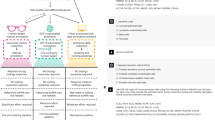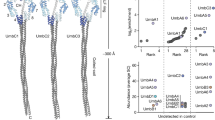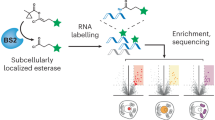Abstract
Since its introduction, the 'single-step' method has become widely used for isolating total RNA from biological samples of different sources. The principle at the basis of the method is that RNA is separated from DNA after extraction with an acidic solution containing guanidinium thiocyanate, sodium acetate, phenol and chloroform, followed by centrifugation. Under acidic conditions, total RNA remains in the upper aqueous phase, while most of DNA and proteins remain either in the interphase or in the lower organic phase. Total RNA is then recovered by precipitation with isopropanol and can be used for several applications. The original protocol, enabling the isolation of RNA from cells and tissues in less than 4 hours, greatly advanced the analysis of gene expression in plant and animal models as well as in pathological samples, as demonstrated by the overwhelming number of citations the paper gained over 20 years.
This is a preview of subscription content, access via your institution
Access options
Subscribe to this journal
Receive 12 print issues and online access
$259.00 per year
only $21.58 per issue
Buy this article
- Purchase on Springer Link
- Instant access to full article PDF
Prices may be subject to local taxes which are calculated during checkout

Similar content being viewed by others
References
Chirgwin, J.M., Przybyla, A.E., MacDonald, R.J. & Rutter, W.J. Isolation of biologically active ribonucleic acid from sources enriched in ribonuclease. Biochemistry 18, 5294–5299 (1979).
Cox, R.A. The use of guanidine chloride in the isolation of nucleic acids. Methods Enzymol. 12, 120–129 (1968).
Chomczynski, P. & Sacchi, N. Single-step method of RNA isolation by acid guanidinium thiocyanate-phenol-chloroform extraction. Anal. Biochem. 162, 156–159 (1987).
Puissant, C. & Houdebine, L.M. An improvement of the single-step method of RNA isolation by acid guanidinium thiocyanate-phenol-chloroform extraction. Biotechniques 8, 148–149 (1990).
Chomczynski, P. Solubilization in formamide protects RNA from degradation. Nucleic Acids Res. 20, 3791–3792 (1992).
Sambrook, J., Fritsch, E.F. & Maniatis, T. Molecular Cloning. A Laboratory Manual. Second Edition. (1989).
Wilfinger, W. W., Mackey, K. & Chomczynski, P. Effect of pH and ionic strength on the spectrophotometric assessment of nucleic acid purity. Biotechniques 22, 474–6, 478–81 (1997).
Acknowledgements
We thank G. Bistulfi (Roswell Park Cancer Institute) for re-editing the original protocol in this new format.
Author information
Authors and Affiliations
Corresponding author
Ethics declarations
Competing interests
The original method described in this article (Chomczynski, P. & Sacchi, N. Single-step method of RNA isolation by acid guanidinium thiocyanate-phenol-chloroform extraction, Anal. Biochem. 162, 156–159 (1987)) is covered by US patent 4,843,155 (Chomczynski, P., Product and process for isolating RNA, 1989.).
Rights and permissions
About this article
Cite this article
Chomczynski, P., Sacchi, N. The single-step method of RNA isolation by acid guanidinium thiocyanate–phenol–chloroform extraction: twenty-something years on. Nat Protoc 1, 581–585 (2006). https://doi.org/10.1038/nprot.2006.83
Published:
Issue Date:
DOI: https://doi.org/10.1038/nprot.2006.83
This article is cited by
-
Sex-dependent circadian alterations of both central and peripheral clock genes expression and gut–microbiota composition during activity-based anorexia in mice
Biology of Sex Differences (2024)
-
NAP-seq reveals multiple classes of structured noncoding RNAs with regulatory functions
Nature Communications (2024)
-
Dysregulation of long non-coding RNAs in Takayasu arteritis: A proof-of-concept study
Clinical Rheumatology (2024)
-
CryoGrid-PIXUL-RNA: high throughput RNA isolation platform for tissue transcript analysis
BMC Genomics (2023)
-
A polo-like kinase inhibitor identified by computational repositioning attenuates pulmonary fibrosis
Respiratory Research (2023)
Comments
By submitting a comment you agree to abide by our Terms and Community Guidelines. If you find something abusive or that does not comply with our terms or guidelines please flag it as inappropriate.



